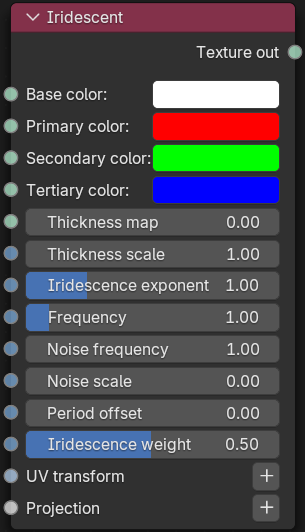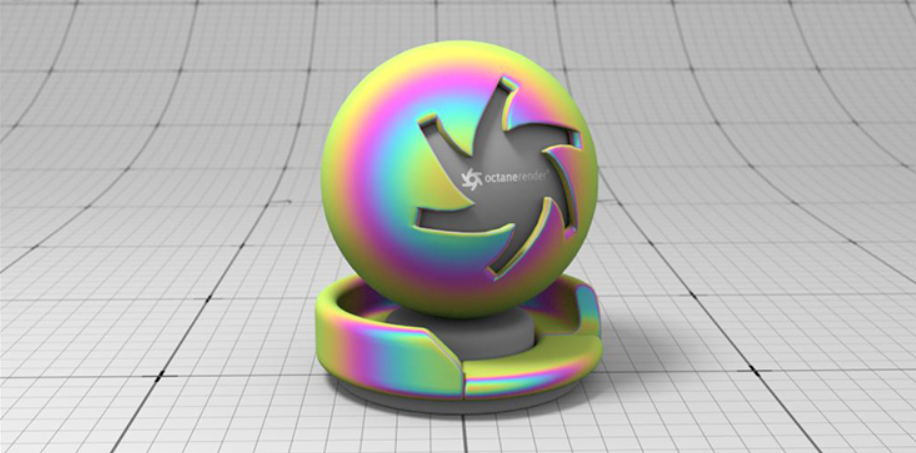Iridescent
The Iridescent texture node produces an effect where surfaces appear to gradually change color as the angle and illumination of view changes (figure 2).

Figure 1: Iridescent Node

Figure 2: The Iridescent node example
Parameters
- Base Color - Determines the base color underlying the other iridescent colors.
- Primary Color - The first color layer above the base color.
- Secondary Color - Provides an additional color layer to mix with the base and primary colors.
- Tertiary Color - Provides an additional color layer to mix with the secondary, primary, and base colors.
- Thickness Map - Determines the thickness of the color bands.
- Thickness Scale - A scale value applied to the thickness map.
- Iridescent Exponent - Adjusts the overall shape of the iridescent effect.
- Frequency - Determines how many color bands are generated.
- Noise Frequency - Adjusts the smoothness of the color bands.
- Noise Scale - Determines the scale of the noise parameter.
- Period Offset - Adjusts the positioning of the color bands across the surface.
- Iridescence Weight - Blend the primary, secondary, and tertiary color bands with the base color.
- UVW Transform - Positions, scales, and rotates the surface texture.
- Projection - Sets how the texture projects onto the surface.